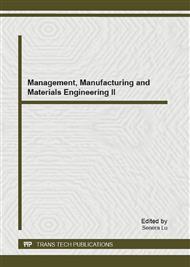p.270
p.275
p.280
p.289
p.294
p.301
p.307
p.312
p.318
Investigation of Performance of Scramjet Combustion Used Kerosene with Clean Air
Abstract:
The aaviation kerosene is a practical candidate fuel for scramjet engine in the flight regimes of Mach number less than 8, in considerations of safety, economy and portable. In the present paper, the ignition characteristics of a scramjet combustor model fueled by aviation kerosene was experimentally investigated, using the resistance heating direct-connected supersonic combustion facility of Northwestern Polytechnical University. The inflow conditions at the direct-connected combustor entrance were specified as: the nominal Mach of 2.0, the total temperature of 870~930K and the total pressure of about 770kPa. Three combustor performance of difference ER were compared applied CFD simulated. The experimental result suggested that: the cavity design is a key problem for kerosene successful ignition is the combustor; That chooses appropriate gas-oil ratio could increased performance of combustor and kept isolator interfered by gas.
Info:
Periodical:
Pages:
294-298
Citation:
Online since:
December 2012
Authors:
Keywords:
Price:
Сopyright:
© 2013 Trans Tech Publications Ltd. All Rights Reserved
Share:
Citation:


